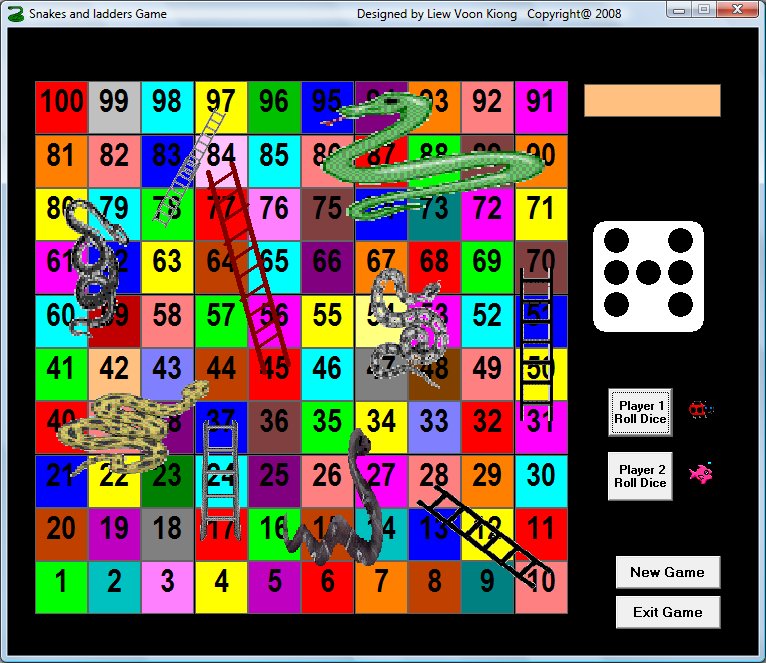Snakes and Ladders Game in Visual Basic 6
Game Rules
Snakes and Ladders is a classic board game for children that involves:
- 2-4 players taking turns to roll a dice
- Moving their tokens along a 100-square board
- Encountering snakes that send players backward
- Finding ladders that advance players forward
- The first player to reach square 100 wins
Game Implementation in VB6
This implementation uses mathematical logic to create the game board and movement mechanics. The board is represented as a 10×10 grid where each cell has specific coordinates.
Board Coordinate System
The game uses two arrays c(10) for column positions and r(10) for row positions. These arrays store the coordinates for each cell on the board.
Player Movement
The object.Move col(i), row(j) method moves player tokens based on dice rolls. The movement follows a zigzag pattern from bottom to top.
Snake and Ladder Logic
Special logic handles when a player lands on a snake's head (moves down) or the bottom of a ladder (moves up).
Turn Management
The game alternates between players, manages dice rolls, and checks for win conditions (reaching the final square).
Coordinate System Setup
The game board is initialized by defining coordinates for each cell:
' Declare coordinate arrays
Dim c(10) As Variant
Dim r(10) As Variant
Private Sub Form_Load()
' Set initial position (bottom-left corner)
c(1) = 600
r(1) = 8200
' Calculate column positions
For i = 1 To 9
c(i + 1) = c(i) + 800
Next i
' Calculate row positions (moving upward)
For j = 1 To 9
r(j + 1) = r(j) - 800
Next j
End Sub
Board Coordinate Visualization
Figure: Simplified board showing snakes (red) and ladders (green)
Player Movement Code
Moving a player token involves calculating the new position based on the dice roll:
' Move player token to new position
Private Sub MovePlayer(playerIndex As Integer, diceValue As Integer)
' Calculate new position
newPosition = currentPosition(playerIndex) + diceValue
' Check for snakes and ladders
newPosition = CheckSpecialPositions(newPosition)
' Calculate grid coordinates
row = ((newPosition - 1) \ 10) + 1
col = CalculateColumn(newPosition, row)
' Move the player token
Image1(playerIndex).Move c(col), r(row)
End Sub
Game Interface

Figure: VB6 implementation of the Snakes and Ladders game
Game Demonstration
Video Demo
Key Programming Concepts
This implementation demonstrates:
- Coordinate-based positioning of game elements
- Array manipulation for game state management
- Conditional logic for special squares (snakes and ladders)
- Turn-based game flow control
- Image manipulation for player tokens